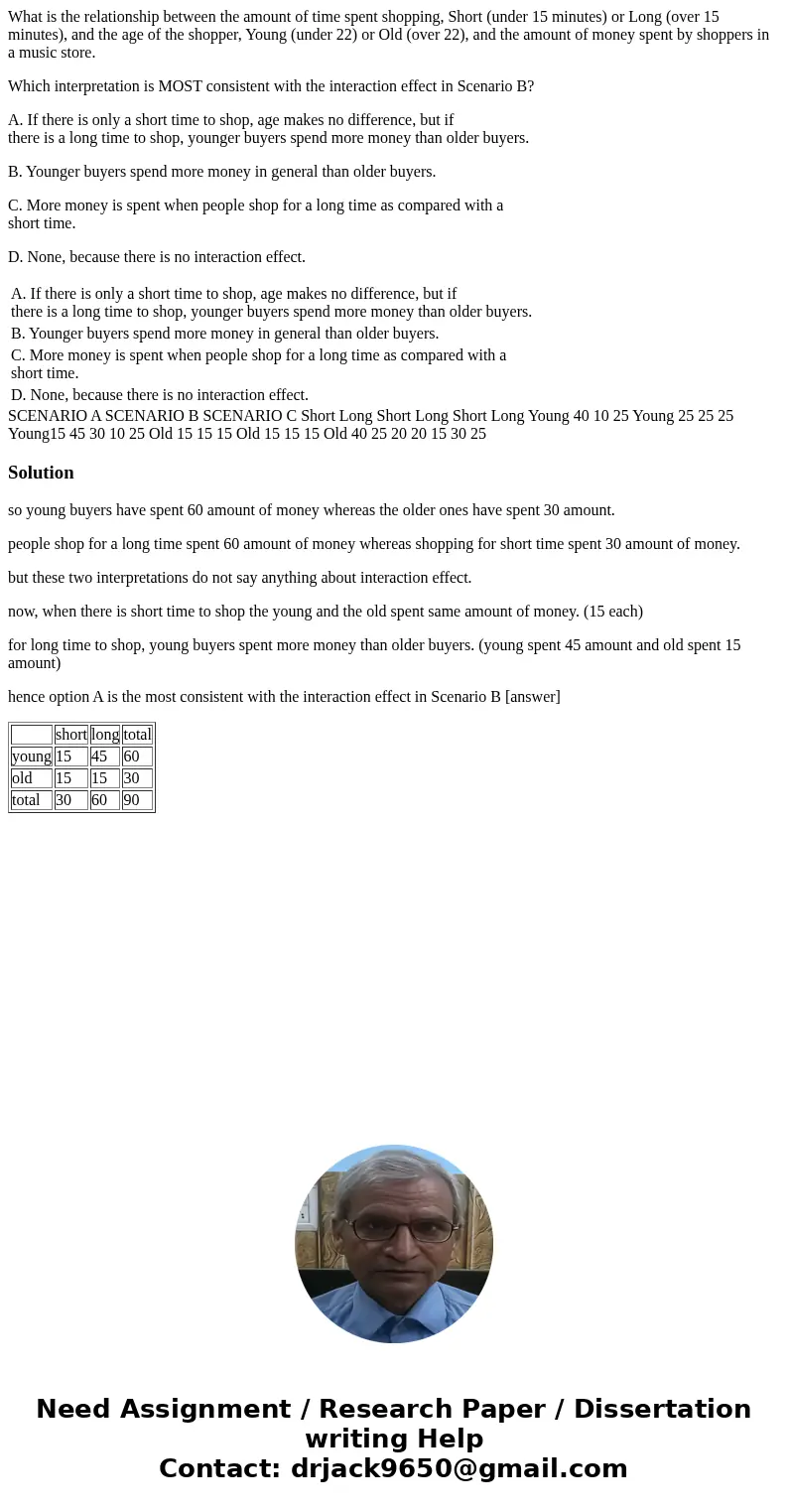What is the relationship between the amount of time spent sh
What is the relationship between the amount of time spent shopping, Short (under 15 minutes) or Long (over 15 minutes), and the age of the shopper, Young (under 22) or Old (over 22), and the amount of money spent by shoppers in a music store.
Which interpretation is MOST consistent with the interaction effect in Scenario B?
A. If there is only a short time to shop, age makes no difference, but if
there is a long time to shop, younger buyers spend more money than older buyers.
B. Younger buyers spend more money in general than older buyers.
C. More money is spent when people shop for a long time as compared with a
short time.
D. None, because there is no interaction effect.
| A. If there is only a short time to shop, age makes no difference, but if | |
| B. Younger buyers spend more money in general than older buyers. | |
| C. More money is spent when people shop for a long time as compared with a | |
| D. None, because there is no interaction effect. |
Solution
so young buyers have spent 60 amount of money whereas the older ones have spent 30 amount.
people shop for a long time spent 60 amount of money whereas shopping for short time spent 30 amount of money.
but these two interpretations do not say anything about interaction effect.
now, when there is short time to shop the young and the old spent same amount of money. (15 each)
for long time to shop, young buyers spent more money than older buyers. (young spent 45 amount and old spent 15 amount)
hence option A is the most consistent with the interaction effect in Scenario B [answer]
| short | long | total | |
| young | 15 | 45 | 60 |
| old | 15 | 15 | 30 |
| total | 30 | 60 | 90 |

 Homework Sourse
Homework Sourse